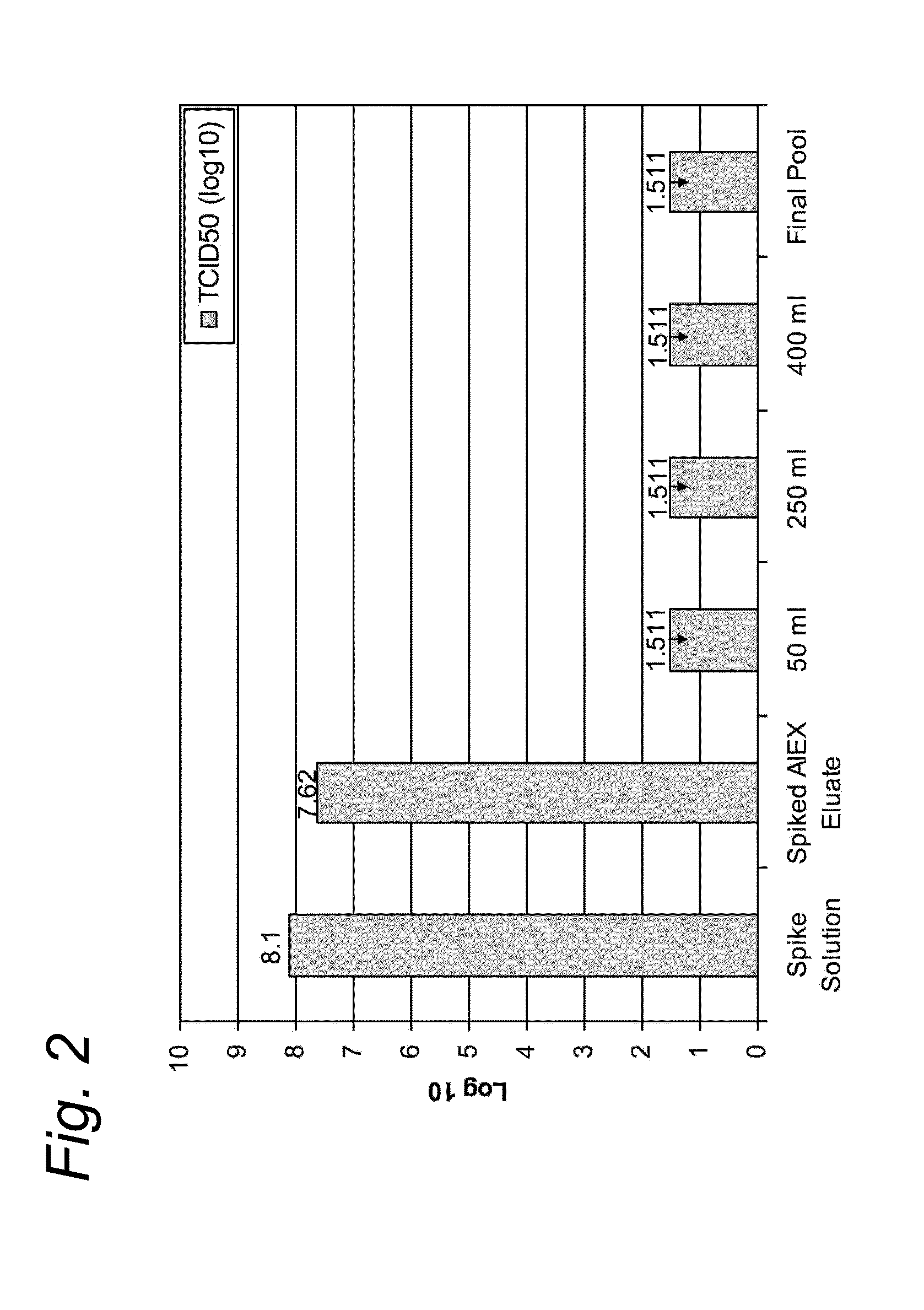Removal of contaminating viruses from AAV preparations
a technology of contaminating viruses and preparations, applied in the field of virology and gene therapy, can solve the problems of inability to replicate in the cell by itself, formation of a mixed population of product virus particles and helper viruses, and inability to subject to further purification, etc., and achieves the effect of not being able to achieve industrial-scale purification methods, and reducing the number of viruses in the cell
- Summary
- Abstract
- Description
- Claims
- Application Information
AI Technical Summary
Benefits of technology
Problems solved by technology
Method used
Image
Examples
example 1
[0061]Adeno-associated viral vector (AAV) was produced following infection of insect cells with three recombinant baculoviruses as previously described by Urabe et al., 2002 (Hum. Gene Ther 13(16):1935-1943).
[0062]Three days after infection the cell culture was detergent lysed and subsequently nuclease treated by the addition of 9 U / mL Benzonase (Merck) and incubation at manufacturer's recommendations.
[0063]The crude lysed bulk was subsequently clarified by filtration with a Pall Profile® Star and Pall Supor® filters (Pall Corporation) in series. A viral reduction incubation in the presence of detergent was performed at least 28° C. This material was purified via affinity chromatography using AVB Sepharose HP, GE Healthcare. Briefly, the filtered cell lysate was applied to a 20 cm diameter column (BPG 200 / 500, GE Healthcare with approximately 6 cm bed height at a linear velocity of 150 cm / hr. The column was washed with phosphate buffered saline until the UV absorbance curve returned...
PUM
| Property | Measurement | Unit |
|---|---|---|
| Fraction | aaaaa | aaaaa |
| Pore size | aaaaa | aaaaa |
| Pore size | aaaaa | aaaaa |
Abstract
Description
Claims
Application Information
 Login to View More
Login to View More - R&D
- Intellectual Property
- Life Sciences
- Materials
- Tech Scout
- Unparalleled Data Quality
- Higher Quality Content
- 60% Fewer Hallucinations
Browse by: Latest US Patents, China's latest patents, Technical Efficacy Thesaurus, Application Domain, Technology Topic, Popular Technical Reports.
© 2025 PatSnap. All rights reserved.Legal|Privacy policy|Modern Slavery Act Transparency Statement|Sitemap|About US| Contact US: help@patsnap.com


